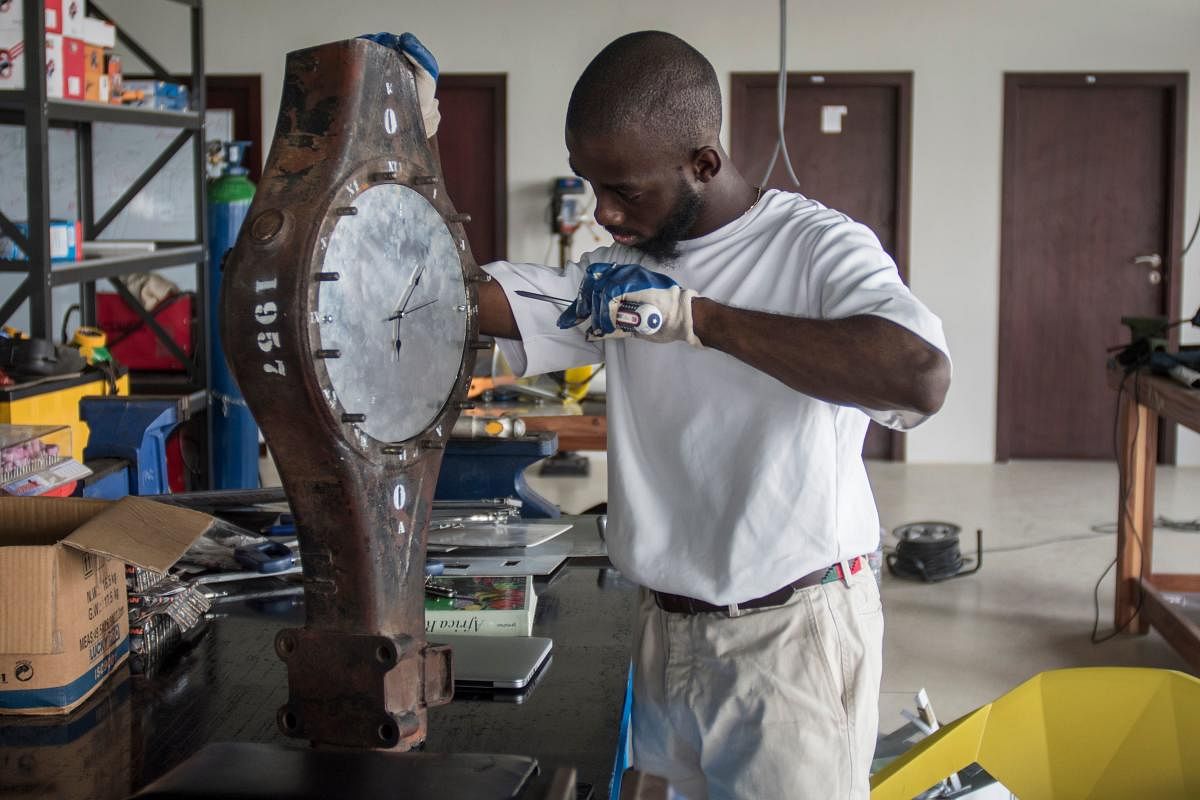
Joseph Awuah-Darko sits on a stool at one of the world's largest electronic waste dumps, watching polystyrene and insulation cables burn on the blackened ground.
"It's survival and dystopia," says the 21-year-old British-born Ghanaian, surveying the stretch of wasteland around him as dense plumes of acrid smoke rise into the air. Awuah-Darko and his university friends have ambitious plans for the sprawling Agbogbloshie dumping ground in Ghana's capital, Accra.
In January this year, he co-founded the non-profit Agbogblo.Shine Initiative, which encourages people working at the dump to turn waste into high-end furniture.
The dump workers typically risk exposure to harmful fumes by burning obsolete and unwanted appliances such as mobile phones, computers, televisions and plastics that are brought to Ghana from around the world.
After burning, they salvage and resell copper and other metals from these leftovers of modern consumer culture.
The dump and scrapyard sit next to the heavily polluted Odaw River in the slum-like area, home to an estimated 40,000 people.
Ghana is said to have the largest informal recycling industry in Africa and imports some 40,000 tonnes of this e-waste annually.
When Awuah-Darko first saw the piles of circuit boards, wires and plastics at Agbogbloshie he decided he wanted to use his artistic talent as a force for change.
So he set up the Agbogblo.Shine project with Cynthia Muhonja, a fellow student from Ashesi University, about an hour's drive from Accra.
They repurpose the electronic scraps, "upcycling" them into furniture, and offer training for the young men who work at the dump to create the pieces.
Mohamed Abdul Rahim from the north of Ghana works 12-hour days, six days a week. On average the workers make only about 20 cedi each (3.75 euros) a day.
He knows the work is bad for his health but doesn't see any other option. However he is optimistic that Awuah-Darko's initiative will help.
Deccan Herald is on WhatsApp Channels| Join now for Breaking News & Editor's Picks